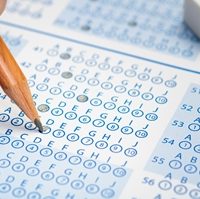The implementation of the Common Core State Standards and the introduction of aligned assessments has drawn attention to standardized testing practices in the U.S. Are all tests too challenging? When does taking multiple exams use up too much of students' and educators' time? For the most part, the answers have been mere speculation and opinion. However, recently several groups have taken a closer look at K-12 schools to better understand current testing practices and whether they are helping or hurting students.
The current state of testing
According to a survey conducted by the Center for American Progress, actual testing doesn't take much time out of the school day, but students do take exams often. In fact, the study indicated that on average, students take 20 standardized tests a year and as many as two a month. At the very least, students take one test a month. Despite the frequency with which students complete exams, the tests only take up about 1.6 percent of instructional time.
Focusing on teaching test material
The most troublesome finding was that educators are teaching to the test. In essence, the survey found that even though tests take a small amount of time to complete, educators use class to teach items that will likely appear on the assessment rather than sticking to curricula. This practice may seem unavoidable to teachers who want students to succeed on their exams. What's more, in districts where this is a problem, students also often have to take practice exams.
The study noted that eliminating unnecessary tests and administering the Common Core-aligned assessments in their stead could help change this trend. These assessments are nuanced, challenging and sophisticated, better identifying how knowledgeable students are than other exams. Furthermore, because the tests are already aligned to the Common Core, educators can stick to curricula to help their students get ready for exams. Of course, additional test prep students complete at home may also improve their chances of scoring well.
Improving the system
The Chief State School Officers and Urban School Leaders announced in October that the groups would work together to produce a better system of testing students in the U.S. By analyzing the state of assessments now and seeing what areas could use improvement, the groups' joint efforts may reduce testing load and instead emphasize quality.
"Assessments are a critical part of public education because they help measure how every student is learning and making progress toward the goals we have set," Chris Minnich, executive director of the Council of Chief State School Officers, said in a statement. "Yet we as state leaders understand there is always room for improvement. As we transition to new assessments aligned with college- and career-ready standards in every state, this is a great opportunity for state leaders to take a look at all assessments and make sure they are of the highest quality and deliver meaningful results."


No comments yet.